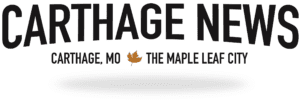STOCKTON, Mo. – “As winter approaches, proper cattle feeding and feeding area management is important to animal health and performance,” says Patrick Davis MU Extension Livestock Field Specialist. Below, he discusses winter cattle feeding and feeding area management strategies for a successful feeding season.
“Help your pastures by moving hay feeding locations frequently to help reduce mud and adequately distribute manure,” says Davis. Cattle producers can feed hay daily by rolling it out across the pasture. Also, producers may implement bale grazing which involves placing hay bales throughout a field and utilizing electric temporary fence to allocate bales daily to the cattle herd. Davis suggests both of these options to cut down on wastage, animal congregation resulting in mud, and adequately distributing cattle manure and fertility which leads to better pastures in the long run.
“Consider pastures that you plan to renovate or with poor grass stands as potential hay feeding areas,” says Davis. He urges hay feeding in these areas to provide fertility to help improve the current grass stand or for future renovation projects.
“If animals are required to congregate in a feeding area during the winter months make sure to pick the proper location and manage the location to cut down on moisture and mud,” says Davis. Select a south facing slope as far away from water as possible. South facing slopes allow more sunlight which helps to dry the area and warm the cattle. Also, the location should have a nearly level slope to cut down on runoff. Consult with your local MU Extension agriculture engineer on strategies that might help reduce mud and moisture in winter-feeding areas, which will help lead to adequate health of the cattle during the winter months.
“To feed cattle efficiently through the winter months, sort cattle by size or body condition and feed according to need. Also make sure adequate bunk space is available for supplement consumption,” says Davis. Visit with your local MU Extension Livestock Field Specialist about sorting and feeding cattle to meet their nutrient need during the winter months. Make sure there are at least 24 inches of bunk space per cow, 18 inches per growing calf, or 12 inches per feedlot calf. Davis urges cattle producers to use these suggestions to efficiently meet cattle nutrient needs during the winter months which helps promote cattle health, performance, and profitability.
Davis urges cattle producers to implement these strategies to cut waste as well as promote optimum health and performance of cattle through the winter-feeding period which should lead to optimum profitability. For more information on topics discussed contact your local MU Extension Center.















